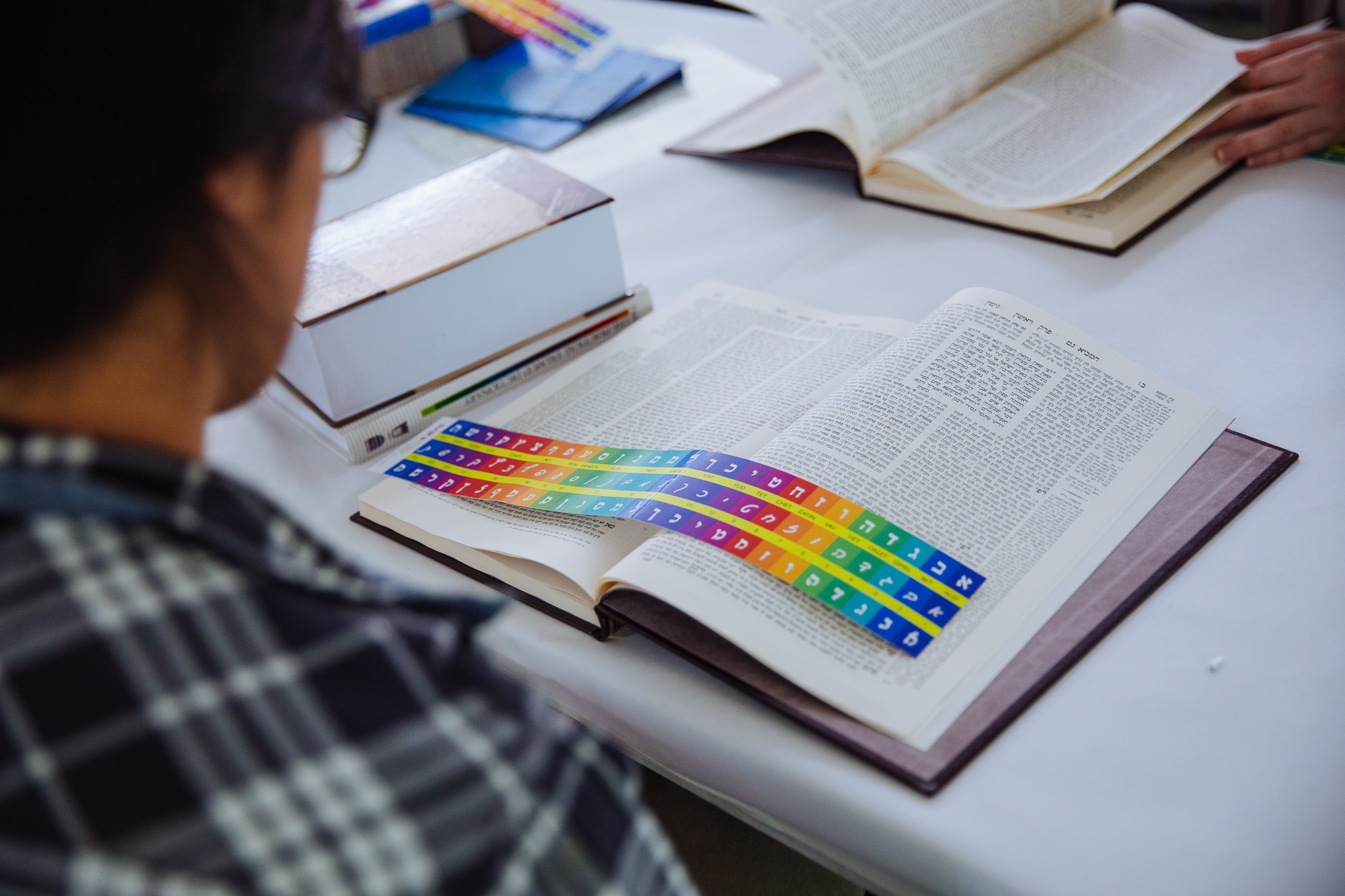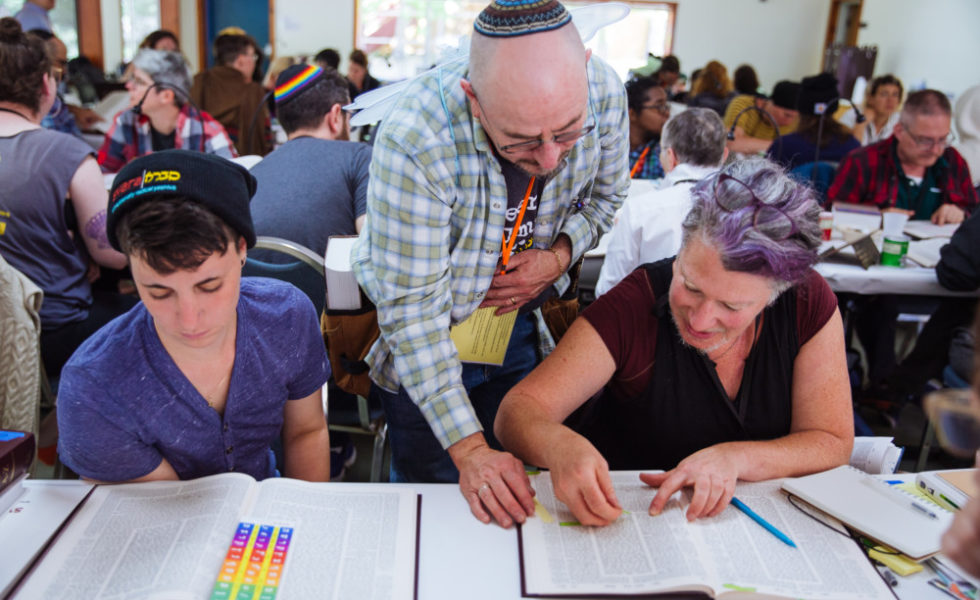
In this sugya, we encounter the emerging rabbinic toolkit. The Rabbis explore the power of scripture and svara to reveal new truths meant to guide us in a world of difficult moral questions. We’ve broken this sugya down into seven chevruta sessions, but (as always!) y’all are encouraged to learn at the pace that feels best to you. If you are looking for a shorter text, sections 4-7 stand on their own.
Prep the Sugya
Just like in the bet midrash, the SVARA method for DIY Learning starts with prepping the text in chevruta. In this step, you’ll move through a section of the sugya word by word, identifying each word’s root and core meaning, and creating an inside translation. Use the Hint Sheet to help break down any tricky words and the Kra Sheet to get context for any scriptural quotations you encounter. If you don’t have a bound masechet, you can download a digital daf to learn from.
This sugya begins toward the top of amud Bava Metzia 9a. We recommend breaking the sugya down into smaller sections as you cycle through the four steps of the SVARA method. If you like to learn a shorter text, you can start with section 4 found about half way down the daf. We suggest learning this text in the following sections:
1) תנו רבנן אין … בהקדש עם הגזברין
2) ואף על פי … באמנה הם עשים
3) אמר רבי אלעזר … שנאמר ויצרו וימנו
4) אמר רב הונא … והאי לא קא מבזי
5) אי בעית אימא קרא … כי תראה לאלתר
6) ורב יהודה אמר … לא קמצערא ליה
7) אי בעית אימא קרא … וכסיתו כשיראה לך
Create an Outside Translation
After you’ve prepped a chunk of text, going word-by-word, in chevruta, it’s time to move from your inside translation to an outside translation. Make your best guess by identifying the verbs, subjects, and objects, inserting punctuation, and getting a feel for the back-and-forth structure of the text. In a SVARA Bet Midrash it would now be time for Shiur—time to unpack the text with a teacher all your bet midrash comrades. For DIY learning, listen to these recordings to compare your translation with a SVARA teacher’s. Coming soon, we’ll post some videos of SVARA staffers unpacking this sugya a little deeper in chevruta!
Below are recordings of a teacher reading and translating each section of text.
1) תנו רבנן אין מחשבין בצדקה עם גבאי צדקה ולא בהקדש עם הגזברין
Reading
Translating
2) ואף על פי שאין ראיה לדבר זכר לדבר שנאמר ולא יחשבו את האנשים אשר יתנו את הכסף על ידם לתת לעשי המלאכה כי באמנה הם עשים
Reading
Translating
3) אמר רבי אלעזר אף על פי שיש לו לאדם גזבר נאמן בתוך ביתו יצור וימנה שנאמר ויצרו וימנו
Reading
Translating
4) אמר רב הונא בודקין למזונות ואין בודקין לכסות אי בעית אימא קרא ואי בעית אימא סברא אי בעית אימא סברא האי קא מבזי והאי לא קא מבזי
Reading
Translating
5) אי בעית אימא קרא הלא פרש לרעב לחמך בשין כתיב פרש והדר הב ליה והתם כתיב כי תראה ערם וכסיתו כי תראה לאלתר
Reading
Translating
6) ורב יהודה אמר בודקין לכסות ואין בודקין למזונות אי בעית אימא סברא ואי בעית אימא קרא אי בעית אימא סברא האי קמצערא ליה והאי לא קמצערא ליה
Reading
Translating
7) אי בעית אימא קרא הכא כתיב הלא פרס לרעב לחמך פרוס לאלתר וכדקרינן והתם כתיב כי תראה ערם וכסיתו כשיראה לך
Reading
Translating
Go Deeper
Can’t get enough of this sugya? Neither can we! Our DIY Chevruta resources now include a range of SVARA commentary on our all-time favorite texts. Check out the articles below by our faculty and fairies in Hot Off the Shtender and the discussion of this sugya by Rosh Yeshiva Benay Lappe and Dan Libenson on The Oral Talmud.
Did this sugya inspire you to make art, music, poetry, pottery, or another type of creative expression? We’d love to display your commentary in whatever form it takes in the SVARA gallery. (You can check out what others have made too.)
Want to dig in even further? Let’s connect in fairy hours!


